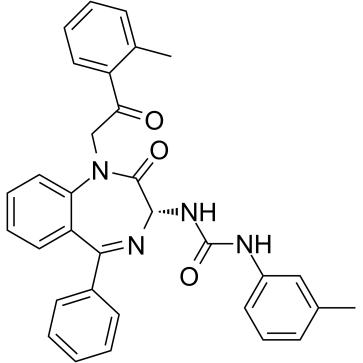Human bone marrow niche chemoprotection mediated by cytochrome P450 enzymes.
Salvador Alonso, Meng Su, Jace W Jones, Sudipto Ganguly, Maureen A Kane, Richard J Jones, Gabriel Ghiaur
文献索引:J. Biol. Chem. 280(39) , 33368-73, (2005)
全文:HTML全文
摘要
Substantial evidence now demonstrates that interactions between the tumor microenvironment and malignant cells are a critical component of clinical drug resistance. However, the mechanisms responsible for microenvironment-mediated chemoprotection remain unclear. We showed that bone marrow (BM) stromal cytochrome P450 (CYP)26 enzymes protect normal hematopoietic stem cells (HSCs) from the pro-differentiation effects of retinoic acid. Here, we investigated if stromal expression of CYPs is a general mechanism of chemoprotection. We found that similar to human hepatocytes, human BM-derived stromal cells expressed a variety of drug-metabolizing enzymes. CYP3A4, the liver's major drug-metabolizing enzyme, was at least partially responsible for BM stroma's ability to protect multiple myeloma (MM) and leukemia cells from bortezomib and etoposide, respectively, both in vitro and in vivo. Moreover, clarithromycin overcame stromal-mediated MM resistance to dexamethasone, suggesting that CYP3A4 inhibition plays a role in its ability to augment the activity of lenalidomide and dexamethasone as part of the BiRd regimen. We uncovered a novel mechanism of microenvironment-mediated drug resistance, whereby the BM niche creates a sanctuary site from drugs. Targeting these sanctuaries holds promise for eliminating minimal residual tumor and improving cancer outcomes.
相关化合物
| 结构式 | 名称/CAS号 | 分子式 | 全部文献 |
|---|---|---|---|
 |
YM022
CAS:145084-28-2 |
C32H28N4O3 |
|
Motilin Stimulates Gastric Acid Secretion in Coordination wi...
2015-01-01 [PLoS ONE 10 , e0131554, (2015)] |
|
Glycogen Synthase Kinase-3beta regulates Snail and beta-cate...
2010-01-01 [J. Mol. Signal. 5 , 9, (2010)] |
|
Signaling through cholesterol esterification: a new pathway ...
2009-11-01 [J. Lipid Res. 50(11) , 2203-11, (2009)] |
|
Stimulatory effect of N-methyltyramine, a congener of beer, ...
2010-02-01 [Alcohol. Clin. Exp. Res. 34 Suppl 1 , S14-7, (2010)] |
|
Pharmacological and molecular characterization of muscular c...
2000-12-01 [Neurogastroenterol. Motil. 12(6) , 539-46, (2000)] |